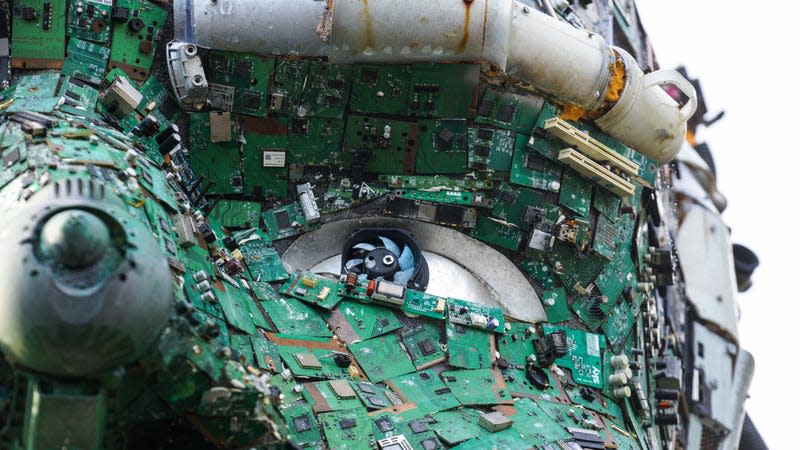Those Discarded Vapes and Headphones Help Create 9 Million Tons of E-Waste

Even if it doesn’t have a motherboard, anything containing electronics is considered e-waste.
All of our discarded toys are adding up to a big problem. According to a new report from the Waste Electronic and Electric Equipment (WEEE) Forum, one-sixth of all annual e-waste by mass is what is called “invisible” waste, since they’re tossed in the trash without most folks considering it to be a big deal the way they might with a phone or laptop. This accounts for anything with minor electronics in it, whether it’s an old pair of wired headphones or a talking doll.
All that junk is equivalent to around 9 billion kilograms, or 9 million metric tons each year. It’s hard to put that into perspective mostly because it’s an Olympus-sized mountain of trash if it were all laid out in front of you. According to the study conducted by the United Nations Institute for Training and Research, discarded vapes alone account for 42 million kilograms of discarded trash, according to the forum’s estimates. That’s the weight of six Eiffel Towers or three Brooklyn Bridges. All these figures are based on data found in UNITAR’s 2020 Global E-Waste Monitor.
Read more
Dragon Ball Daima Is The Newest DBZ Series And Toriyama Is Back
Tommy Tuberville Falling Off A Plane Is The Best Thing We've Seen Since The Cop Slide
There's a new South Park "event" teaser and god, we're already so tired
Michigan TV network fires sports director for Mel Tucker ‘analysis’ that read more like PR work
Most of these products contain toxic materials, and they need to be recycled in a specialized way. Yet there’s a whole load of products most people do not usually classify as tech getting thrown out. Around 3.2 billion kilograms of the stuff is made up of toys, from race cars to Speak and Spells. With an estimated worldwide population of 7.8 billion people on earth, there’s an electronic toy discarded every year.
This e-waste can contain crucial materials such as gold or badly needed copper. WEEE estimated that all the e-waste (including the “invisible” category but also including other prominent e-waste) sent to the dump in 2019 was worth $57 billion, mostly made up of iron, gold, and copper components. A sixth of that, worth $9.5 billion, was from these small electronics.
E-waste is an ongoing problem the world over, and despite the routine calls for more action on the waste front, companies big and small continue to fail to reduce plastic and electronic waste. The Forum mentioned that 55% of e-waste is collected and reported in Europe thanks to regulations, though the UN has noted that the average rate for the rest of the world is just 17%.
However, what the report doesn’t make much mention of is the tech companies developing made-to-fail products. Anybody spending much time in tech knows of the many companies pushing their sustainability initiatives. Apple recently made headlines with its own push for CO2-neutral products at its recent Wonderlust showcase. Even with more recycled materials inside products, the problem is that tech necessarily breaks, becomes outmoded, or is planned for obsolescence from the start. Without an active community of both companies and governments working to collect e-waste, the current cycle of tech will remain unsustainable.
More from Gizmodo
Only John Carpenter knows who’s the Thing at the end of The Thing
Woman Arrested After Wrapping Car To Look Like A Florida State Trooper
Joel McHale has been streets ahead of Chevy Chase's insults since 2009
Sorry, What?! Florida Man Walks Free After Stabbing His Date, But It Gets Worse
Sign up for Gizmodo's Newsletter. For the latest news, Facebook, Twitter and Instagram.
